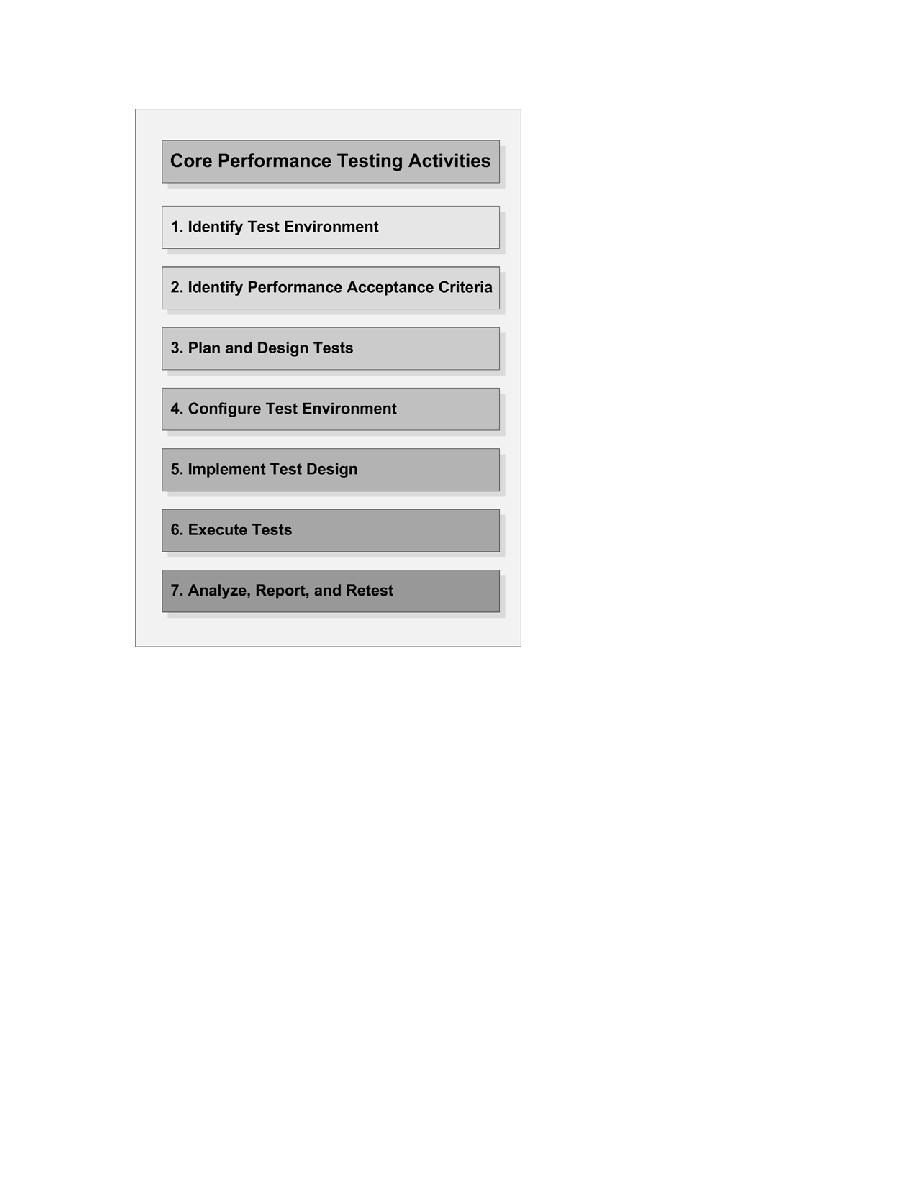
The performance-testing approach
The performance-testing approach used in this guide consists of the following activities:
·
and the production environment as well as the tools and resources available to the test
team. The physical environment includes hardware, software, and network
configurations. Having a thorough understanding of the entire test environment at the
outset enables more efficient test design and planning and helps you identify testing
challenges early in the project. In some situations, this process must be revisited
periodically throughout the project's life cycle.
throughput, and resource utilization goals and constraints. In general, response time is
a user concern, throughput is a business concern, and resource utilization is a system
concern. Additionally, identify project success criteria that may not be captured by
those goals and constraints; for example, using performance tests to evaluate what
combination of configuration settings will result in the most desirable performance
characteristics.
among representative users and how to simulate that variability, define test data, and
establish metrics to be collected. Consolidate this information into one or more
models of system usage to be implemented, executed, and analyzed.